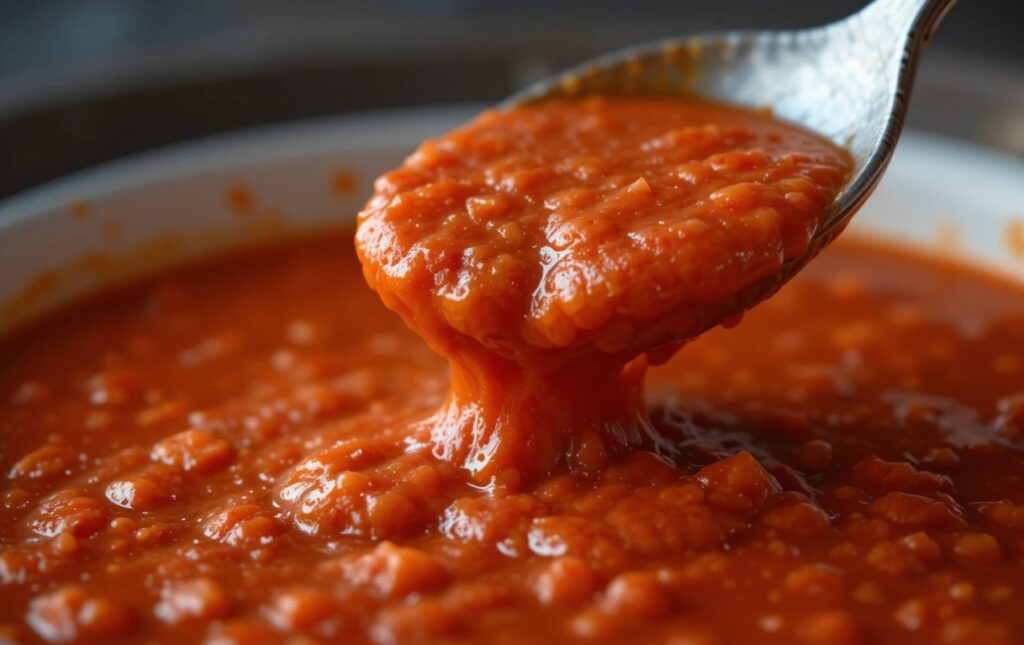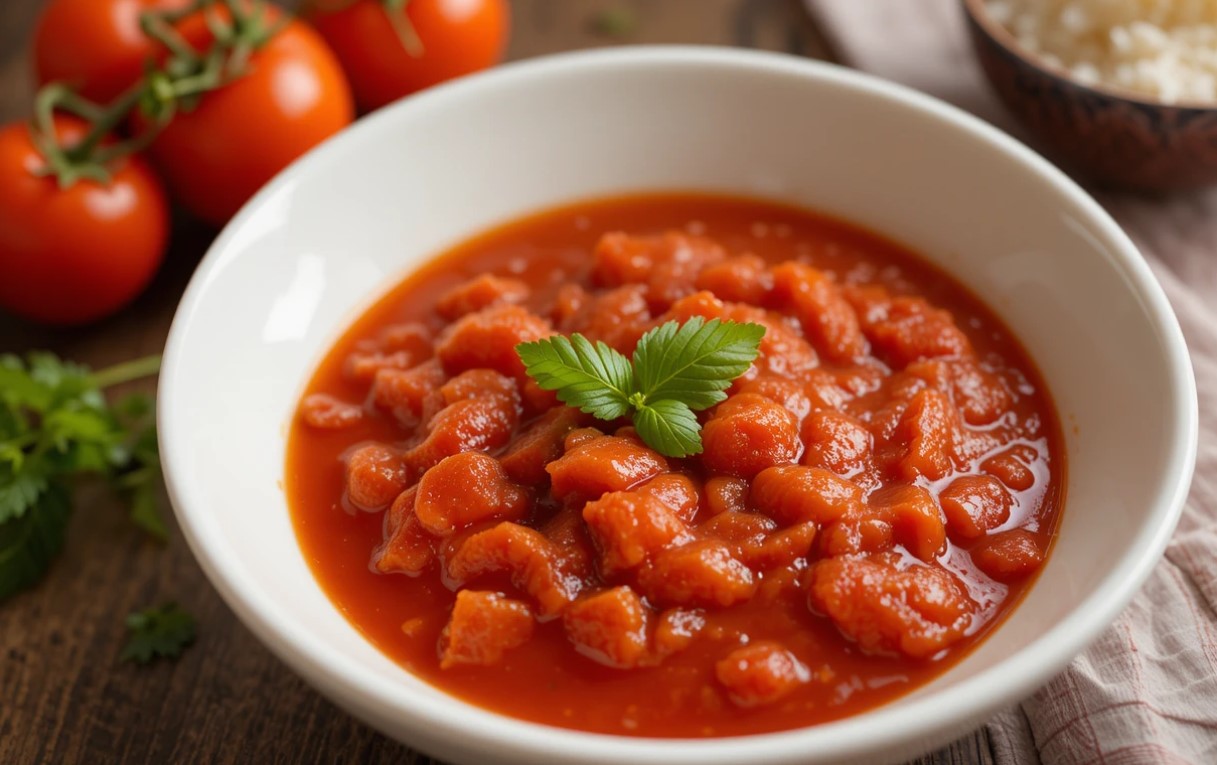Why Do New Yorkers Call Tomato Sauce Gravy?
New York is a melting pot of cultures, and its culinary scene reflects this diversity. Among the many traditions that thrive in the city, one question often arises: Why do some New Yorkers call tomato sauce “gravy?” This seemingly simple term carries with it a rich history, tied to Italian-American immigrants who made the city their home. Understanding this unique expression reveals the depth of tradition, language, and culinary pride embedded in New York’s vibrant culture.
Origins and History
Tracing the Roots of the Term “Gravy”
The term “gravy” for tomato sauce isn’t just a quirky choice of words—it’s a testament to the blending of cultures and the evolution of language. Italian-American cuisine, which plays a central role in New York’s food landscape, owes its origins to the wave of Italian immigrants who brought their traditions to the United States in the late 19th and early 20th centuries. These immigrants settled in neighborhoods like Little Italy in Manhattan and Arthur Avenue in the Bronx, creating vibrant communities that preserved their heritage.
1. Italian Immigration to New York
The late 19th century marked a significant period of Italian migration to New York. Between 1880 and 1920, millions of Italians left their homeland in search of better opportunities. They brought with them not only their skills and hopes but also their deep love for food.
Tomato-based sauces were a staple in southern Italy, particularly in regions like Campania and Sicily. These sauces, known as sugo or ragù, were often simmered with meat and served as a centerpiece of family meals. When these immigrants arrived in New York, they adapted their recipes to fit the ingredients available in their new home, creating the foundations of what we now recognize as Italian-American cuisine.
2. Language Evolution and “Sugo”
The transformation from sugo to “gravy” is rooted in language and cultural adaptation. In Italian, sugo refers to any sauce, typically one made with tomatoes and meat. However, the English word “gravy” was used by early Italian immigrants to describe their meaty tomato sauce because it closely resembled the rich, meat-based gravies common in Anglo-American cuisine.
Over time, this terminology stuck, particularly in communities with a strong Italian-American presence. For many families, calling tomato sauce “gravy” became a way to distinguish the robust, meat-laden sauce served during Sunday dinners from simpler marinara sauces used during the week.
By understanding the linguistic and cultural shifts brought about by immigration, we can see how “gravy” became a cherished term in Italian-American households—and by extension, in New York’s culinary lexicon.
Cultural Context
The Role of Food in Italian-American Families
In Italian-American culture, food is much more than sustenance—it’s an expression of love, tradition, and community. The term “gravy” holds deep sentimental value for many families, especially when tied to the iconic Sunday dinner. This weekly ritual was not just about eating; it was a time for gathering, storytelling, and celebrating family bonds.
At the heart of these gatherings was the tomato sauce, simmered for hours with meatballs, sausages, and sometimes pork. The aroma would fill the house, signaling that it was time to slow down and connect with loved ones. The term “gravy” became synonymous with this rich, meaty sauce that represented comfort and heritage.
Why “Gravy” and Not “Sauce”?
The choice of the word “gravy” over “sauce” can be traced to cultural distinctions. In southern Italy, sugo often included meat, while marinara referred to a simpler, meatless sauce. When Italian immigrants adapted their recipes to the ingredients and terminology of the U.S., they gravitated toward “gravy” because it conveyed the idea of a hearty, meat-based dish.
This differentiation also became a point of pride. Calling it “gravy” was a way to honor the labor-intensive process of cooking with love. For many Italian-Americans, it symbolized a connection to their roots and a way of asserting their unique culinary identity in a new country.
Sunday Dinners: A Sacred Tradition
Sunday dinners became a hallmark of Italian-American life in New York. After attending church, families would come together to enjoy a feast centered around pasta with “gravy.” The meal often included antipasto, crusty bread, and, of course, large servings of pasta topped with the signature sauce.
This tradition reflected the values of hospitality and abundance that are integral to Italian culture. Even if families had limited means, they would splurge on ingredients for Sunday dinner, ensuring that the day was marked by joy and togetherness.
Regional Influence Within New York
Italian-American communities across New York City developed their own variations of “gravy.” In Manhattan’s Little Italy, recipes might lean toward lighter tomato bases, while in Brooklyn, home to many Sicilian immigrants, the sauce could include bolder spices and more meat. These regional nuances added to the richness of the “gravy” tradition, making it a hallmark of Italian-American identity in New York.
The use of “gravy” is more than just a term; it reflects the soul of Italian-American culture in New York. It speaks to the resilience of immigrants who preserved their traditions while embracing their new home.
The Debate: Gravy or Sauce?
A Culinary Controversy Among New Yorkers

The debate over whether to call it “gravy” or “sauce” is a passionate topic among New Yorkers. For some, the term “gravy” is a cherished part of their Italian-American heritage, while others see it as a misnomer. This culinary controversy often sparks lively discussions at dinner tables, in restaurants, and even on social media.
What drives this heated debate? The answer lies in tradition, regional preferences, and even the ingredients that go into the sauce itself.
1. Regional Preferences in New York
New York’s diverse boroughs have distinct food cultures, and the terminology around tomato sauce is no exception. In neighborhoods like Brooklyn and Staten Island, where Italian-American communities are prominent, “gravy” remains the preferred term for a meat-based sauce. Families in these areas often cling to the traditions passed down from their ancestors.
Conversely, in Manhattan or Queens, where cultural influences are more varied, “sauce” is often the more commonly used term. These differences reflect the evolution of language and food traditions in New York’s ever-changing cultural landscape.
2. Culinary Ingredients: Does It Matter?
One of the key factors in the debate is the presence of meat in the sauce. Those who call it “gravy” argue that the term specifically refers to tomato sauce cooked with meat, such as meatballs, sausages, or pork. This meaty richness aligns more closely with the traditional concept of “gravy” in English-speaking countries, where gravies are typically meat-based.
On the other hand, those who prefer “sauce” often use the term for both simple marinara and more complex meat-based recipes. For them, “gravy” might seem confusing, especially when discussing Italian-American cuisine with a broader audience.
Key Ingredients That Define “Gravy”:
- Tomatoes: The base of every good gravy starts here.
- Meat: Meatballs, sausages, or pork for flavor and substance.
- Garlic and Herbs: Basil, oregano, and parsley for authentic taste.
- Slow Cooking: The sauce simmers for hours, blending all the flavors.
For many, it’s not just about the ingredients but also the love and time poured into making the dish.
A Community Divided
This debate often transcends generations. Older Italian-Americans, especially those whose families immigrated in the early 20th century, are more likely to use “gravy.” Younger generations, influenced by pop culture and exposure to broader culinary trends, might lean toward “sauce.”
Social media platforms like Twitter and Instagram have become battlegrounds for this debate. Memes and polls about “gravy vs. sauce” frequently go viral, showing just how deeply this terminology resonates with New Yorkers.
The “gravy” versus “sauce” controversy is more than a linguistic debate; it’s a reflection of identity, tradition, and the ever-evolving food culture of New York.
Pop Culture and Media Influence
The Representation of “Gravy” in Media
The term “gravy” has been immortalized in pop culture, becoming synonymous with Italian-American heritage. From movies and TV shows to cookbooks and celebrity chefs, the debate over “gravy” versus “sauce” has taken on a life of its own, further cementing its place in New York’s culinary lexicon.
Iconic works such as The Sopranos, Goodfellas, and A Bronx Tale showcase Italian-American families gathered around tables laden with pasta and rich, red sauce—often referred to as “gravy.” These portrayals have shaped public perceptions of Italian-American food culture and kept the “gravy” debate alive in the collective imagination.
1. Famous References in Movies and TV
Italian-American media has frequently emphasized the term “gravy,” tying it to family traditions and authenticity. For instance:
- In The Sopranos, Sunday dinner scenes often include characters debating recipes, with “gravy” frequently mentioned as a nod to their heritage.
- Goodfellas showcases a classic prison cooking scene where tomato sauce (or “gravy”) is made with meticulous care, highlighting its cultural significance.
- In A Bronx Tale, the importance of food is a recurring theme, with characters preparing elaborate meals featuring “gravy” as a centerpiece.
These cultural touchpoints reinforce the idea that calling it “gravy” isn’t just a culinary choice—it’s a statement about belonging and tradition.
2. The Influence of Celebrity Chefs
Celebrity chefs of Italian-American descent, like Lidia Bastianich and Giada De Laurentiis, have also weighed in on the debate. While some stick to “sauce” for broader audience clarity, others embrace “gravy” when discussing traditional recipes passed down through their families. This dual usage has broadened awareness of the term while keeping its roots intact.
On cooking shows, recipes for “Sunday gravy” often highlight the slow-cooking process, the addition of meat, and the ritualistic importance of the dish. These programs have helped audiences understand the historical and cultural context behind the term.
Pop culture and media have played a pivotal role in keeping the “gravy” tradition alive, offering a window into the lives and values of Italian-American families in New York.
Modern-Day Perspectives
What New Yorkers Say Today

In modern New York, the debate over “gravy” versus “sauce” remains as spirited as ever. Opinions often vary based on generational differences, cultural influences, and even personal experiences. While older generations fiercely defend the term “gravy” as a cornerstone of their Italian-American heritage, younger New Yorkers are more likely to call it “sauce,” influenced by culinary globalization and evolving traditions.
Despite these differences, one thing is clear: both terms evoke pride, nostalgia, and a sense of identity among New Yorkers, showcasing the enduring significance of this iconic dish.
1. The Evolution of Tradition
As with any cultural tradition, the terminology around tomato sauce has evolved over time. In the past, families adhered strictly to recipes and language passed down from their ancestors. Today, however, younger generations are blending old customs with new practices.
For example, while many still prepare “gravy” using their grandmother’s recipe, they might incorporate contemporary twists, such as using plant-based meats or experimenting with non-traditional spices. Some might call it “sauce” simply for convenience, especially when sharing recipes with non-Italian friends who may not understand the cultural context of “gravy.”
This blending of old and new reflects the adaptability of Italian-American cuisine in a dynamic city like New York, where innovation and tradition often go hand in hand.
2. Voices from the Streets and Social Media
When asked, New Yorkers often have strong and varied opinions:
- “My grandma called it gravy, so I do too—it’s tradition!”
- “It’s sauce. Gravy is for turkey!”
- “I don’t care what you call it, as long as it tastes good.”
Modern Restaurants Keeping the Tradition Alive
Several Italian-American restaurants in New York honor the term “gravy” by including it on their menus. Iconic spots like Rao’s and Carbone highlight dishes like “Sunday Gravy” as a nod to the tradition. These establishments serve as a bridge between generations, offering a taste of authenticity while appealing to a modern audience.
For younger New Yorkers, these restaurants are often a gateway to learning more about their heritage. For tourists, they offer an authentic glimpse into the Italian-American food culture that has shaped New York’s identity.
The modern-day debate over “gravy” versus “sauce” is more than a linguistic battle—it’s a reflection of how cultural identity evolves while staying rooted in tradition.
FAQs: Common Questions About “Gravy”
- Why do some New Yorkers call tomato sauce “gravy”?
Italian-American immigrants adapted the term “gravy” to describe their meat-based tomato sauce, as it resembled Anglo-American meat gravies. - Is there a difference between “gravy” and “sauce”?
Generally, “gravy” refers to a tomato sauce with meat, while “sauce” is a broader term that can include simpler tomato-based recipes. - Do all Italian-Americans call it “gravy”?
No, the term is more common among Italian-Americans in New York and the northeastern United States, particularly in families with southern Italian roots. - Can vegetarian tomato sauce be called “gravy”?
Traditionally, “gravy” includes meat, but modern interpretations sometimes use the term for meatless versions as a nod to heritage. - Which term is more popular today: gravy or sauce?
“Sauce” is more widely used among younger generations, but “gravy” remains popular in traditional Italian-American families. - How can I make authentic Sunday gravy?
A classic recipe includes tomatoes, meatballs, sausages, pork, garlic, and herbs, simmered for hours to develop rich flavors.
Conclusion: Preserving the Flavor of Tradition
Whether you call it “gravy” or “sauce,” the love and care that go into making this dish remain the same. For New Yorkers, it’s more than a culinary tradition—it’s a celebration of heritage, family, and the cultural melting pot that defines the city. The term “gravy” serves as a delicious reminder of how food can connect us to our roots while evolving to fit the modern world.
No matter what side of the debate you’re on, one thing is certain: the taste of a rich, homemade tomato sauce will always bring people together, just like it has for generations in New York.
Grandpa’s Tomato Gravy
Related Recipes
- “Tuna Tomato Sauce Pasta Recipe“: A tomato-based recipe showcasing another way to use tomatoes.
- “Baked Chicken Fettuccine Alfredo with Broccoli“: Another comforting dish that can be complemented with tomato-based sauces.
Ingredient-Focused Content
- “Lions Mane Mushroom Recipe“: Suggest using a tomato gravy as a flavorful addition for plant-based dishes.
Cooking Techniques and Enhancements
- “Mango Habanero Salsa“: Explore complementary uses of sauces and gravies for flavor diversity.
Storage and Reuse Tips
- “Sous Vide Recipes“: Recommend tomato gravy as a sauce for sous vide-cooked meats or vegetables.
- “Ocean Spray Cranberry Sauce Recipe“: Guide readers on making and storing sauces, including tomato gravy.

